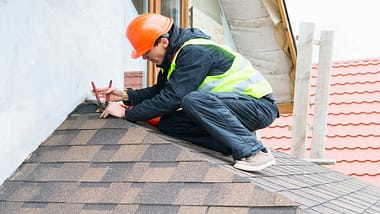Agencia 92: Your Source for Trending News
Stay updated with the latest insights and stories that matter.
When Your Roof is Leaking, Look Up!
Discover quick solutions for your leaking roof! Find out what to do when the rain pours inside and protect your home today!
Top 5 Common Causes of Roof Leaks and How to Identify Them
Roof leaks can be a homeowner's worst nightmare, leading to extensive water damage and costly repairs if not addressed promptly. One of the top causes of roof leaks is damaged or missing shingles, which can allow rainwater to seep into your home. Another common issue is worn-out flashing, the metal seal that protects the joints where the roof meets walls or chimneys. It’s crucial to perform regular inspections, especially after storms, to identify any broken or lifted shingles and signs of rust or corrosion in the flashing.
In addition to shingles and flashing, clogged gutters can contribute significantly to roof leaks by preventing water from draining properly. The water can then back up and infiltrate the roof. Moreover, inadequate ventilation can lead to excessive heat on the roof, causing premature wear and tear. Last but not least, ice dams can form in colder climates, pushing water under the shingles when they melt. Homeowners should be vigilant and look for water stains on ceilings and walls, mold growth, or any new odors, which can indicate a roof leak.

What to Do Immediately When You Discover a Roof Leak
Discovering a roof leak can be a daunting experience, but acting quickly is essential to prevent further damage to your home. The first step is to locate the source of the leak. Inspect your attic or crawl space for any signs of water intrusion. If possible, go outside to examine the roof for missing shingles or visible damage. Using a flashlight can help you spot any damp areas or stains that indicate where the leak may be coming from.
Once you’ve identified the source, it’s crucial to take immediate action to minimize potential damage. If water is actively dripping, place a bucket or container beneath the leak to collect the water. You can also use towels or rags to soak up any excess water in the area. In some cases, it may be necessary to temporarily cover the leak using tarps or plastic sheeting until a professional can assess and repair the damage. Remember to document the situation with photos for insurance purposes.
Is Your Roof Trying to Tell You Something? Signs You Shouldn't Ignore
Your roof is more than just a protective layer over your home; it's a crucial component that communicates its health and longevity. If you notice signs your roof is trying to tell you something, it’s essential not to ignore them. Common indicators include missing shingles, which can expose your roof to further damage and leaks, and dark spots or streaks that may suggest mold or algae growth. Additionally, watch for curling shingles or sagging areas, both of which are serious red flags that require immediate professional attention.
Another important sign to be aware of is granules in your gutters, which can signify that your shingles are deteriorating and may need replacement. If you spot water stains on your ceiling or walls, this could indicate a leak that requires prompt action to prevent further interior damage. Understanding these warning signs can save you from more extensive repairs down the line, so pay close attention to your roof’s health to ensure it continues to protect your home effectively.